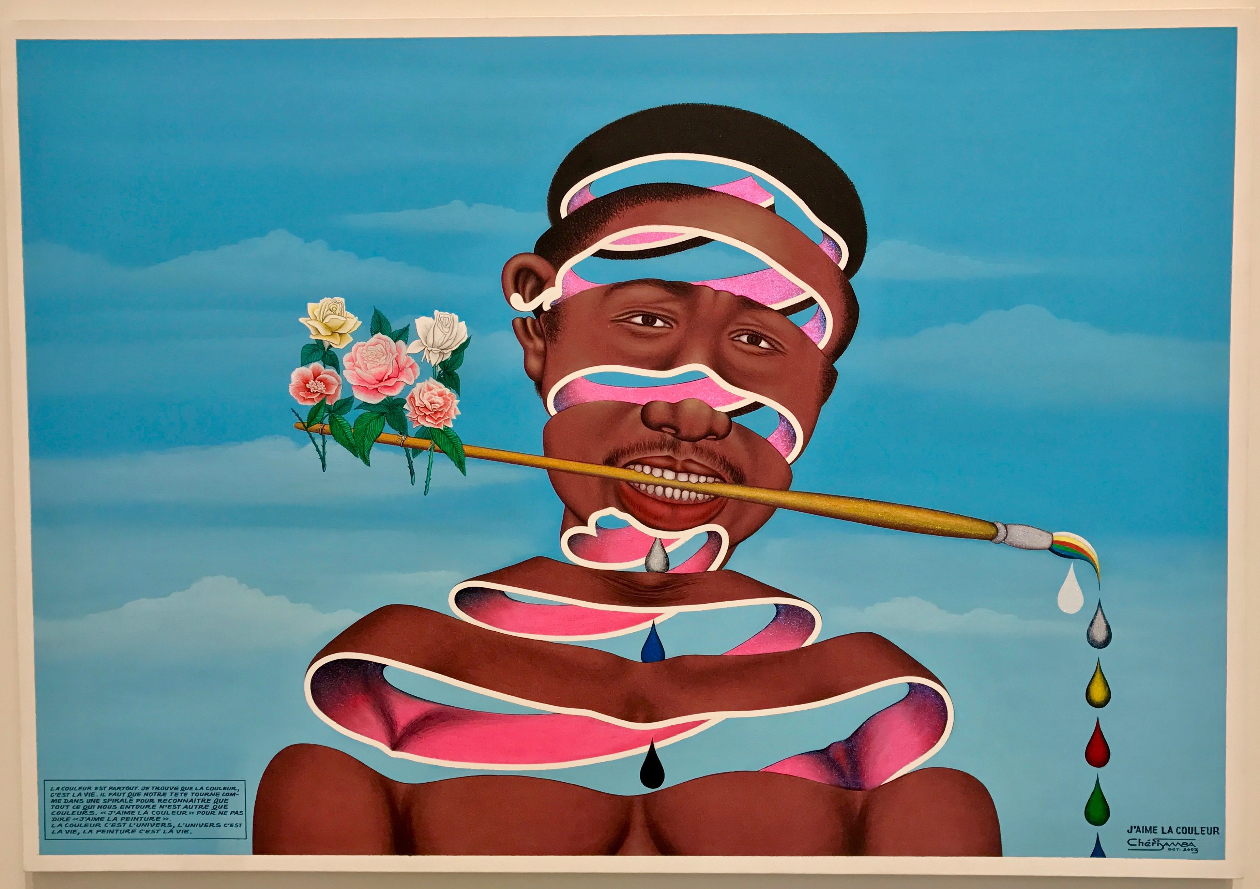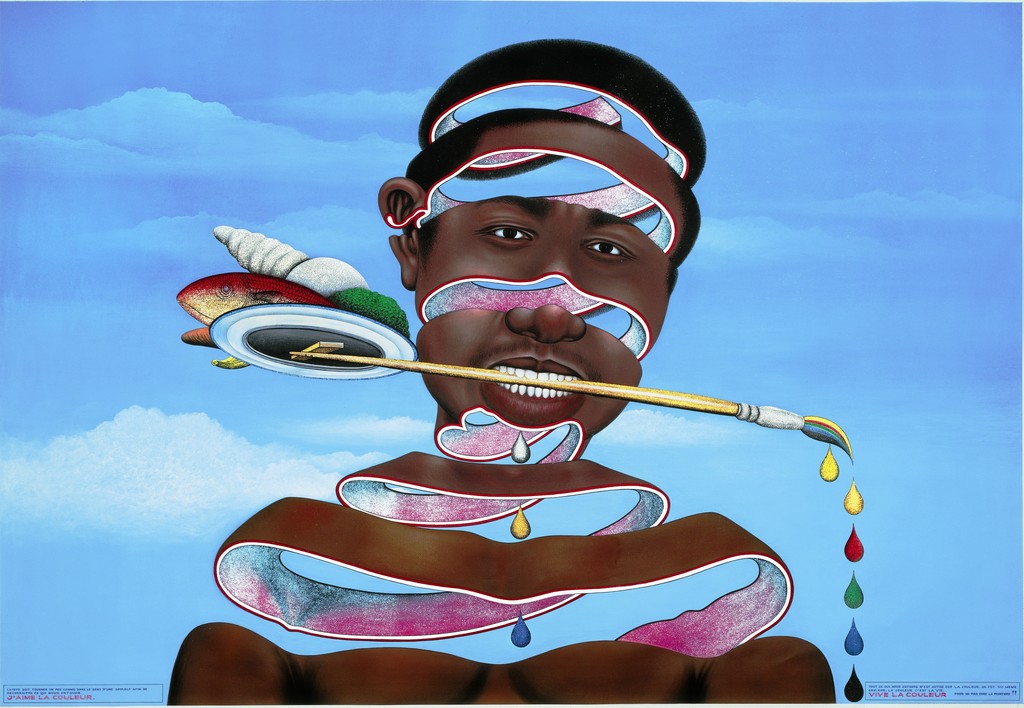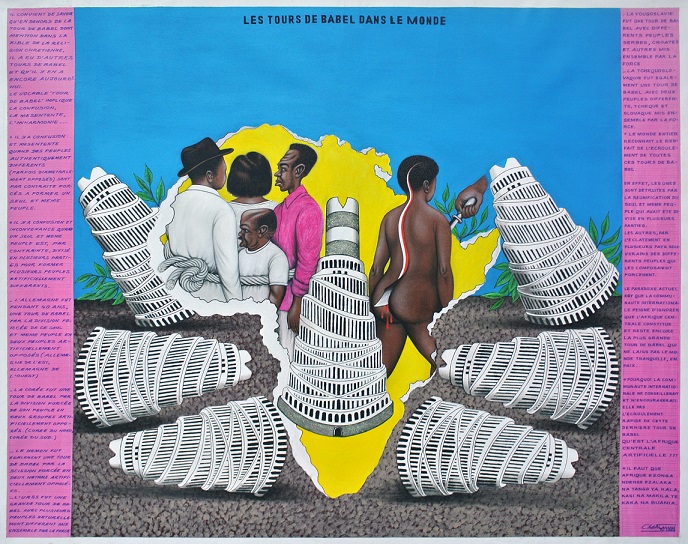


In 2005 the artist was awarded a prize from the Prince Claus Fund. Samba's paintings featured prominently in the Africa Now exhibition in the Groninger Museum (1991) and the African Art Events manifestation in Maastricht (1992). His work was promoted by the Arnhem Galerie 20 x 2 of Felix Valk and Galerie Apunto in Amsterdam. Samba is also not entirely unknown in the Netherlands. Today, Chéri Samba is regarded as one of the most important African artists, and his work can no longer be ignored in biennials and global overviews of contemporary art. The Magiciens de la Terre exhibition at the Centre Pompidou and the Grande Halle de la Villette in Paris (1989) marked the international breakthrough for Samba’s work. In 1979 he took part in the exhibition "Moderne Kunst aus Africa" in West Berlin.

For his work he coined the designation "peinture nationale" - an art movement behind which other artists of his generation also rallied. Je pensais que si j'ajoutais un peu de texte, les gens devraient s'arrêter et prendre le temps de le lire, the se plonger davantage dans la peinture et de l'admirer» (I thought if I added a bit of text people should stop and take the time to read it, delve more into the painting and admire it), the artist later explained. «J'avais remarqué que les gens dans la rue passaient devant les peintures, les regardaient et continuaient. They are humorous and wry paintings that have the immediacy of comics.
CHERI SAMBA ART FULL
Samba handwritingĬhéri Samba gradually developed his characteristic ‘Samba handwriting’ of colorful, glitter-dusted, narrative paintings full of accompanying texts in which the artist personally comments on the world and often figures himself. He borrowed the use of ‘word balloons’ from comic strip art, which allowed him to add not only narrative but also commentary to his compositions, giving him his distinctive style of combining painting with text. Working both as a billboard painter and as a cartoonist, he used the styles of both genres when he started making his paintings on jute sack material. With them and his brother Cheik Ledy, they eventually formed one of the country's most vibrant art groups ever.Īt the same time, he also became an illustrator for the entertainment magazine Bilenge Info. He established his own studio in 1975 and he met artists such as Moké and Bodo. His father didn't like that, but Samba didn't care.Īt sixteen he left school and his village to settle as an advertising painter in the Congolese capital Kinshasa.

Billboard painter and cartoonistĪfter primary school, he went to high school. Since then he has been a Catholic with a Zairian twist. He became a Catholic following religious lessons in elementary school. Samba's parents were associated with the Congo culture, but Samba chose to identify with the Kinshasa culture, the capital of his country. His surname, Samba, has two meanings in the Kikongo language, the first referring to the act of prayer and the second the act of being condemned. His original name was David Samba, but when the government banned Christian first names, he first called himself Samba wa Mbimba N'zingo Nuni Masi Ndo Mbas and then Chéri Samba. His father was a blacksmith, his mother a farmer. The Congolese painter Chéri Samba was born in 1956 as David Samba in Kinto M’Vuila. I also have a lot of work on race and identity as in the painting 'J'aime la couleur'. I paint reality, even if it is shocking, I put humor and color in it to attract people. Chéri Samba: "I appeal to people's consciences. World Fine Art Professionals and their Key-Pieces, 294 - Chéri SambaĬhéri Samba's paintings are about poverty, indignation about stupid opinions about his culture, corruption and chaos.


 0 kommentar(er)
0 kommentar(er)
